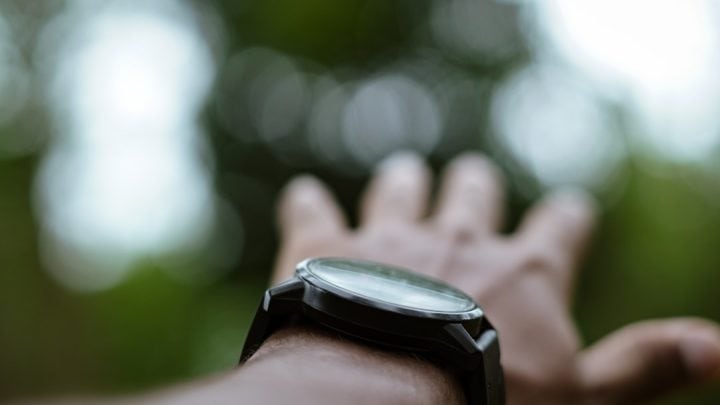In recent years, more people have embraced health-focused technology to help optimize their fitness and lifestyle. Among the features offered by modern fitness wearables, one of the most advanced and insightful metrics is VO2 Max. Often highlighted in high-end smartwatches and fitness trackers, VO2 Max is becoming an essential measurement for athletes, fitness enthusiasts, and even casual users who want to understand their cardiovascular health better. But what does it really mean, how accurate is it in wearables, and how can this metric be used effectively?
What Is VO2 Max?
VO2 Max stands for “Volume of Oxygen Maximum.” It refers to the maximum rate at which your body can consume oxygen during intense exercise. In simpler terms, it reflects how efficiently your cardiovascular and respiratory systems deliver oxygen to your muscles and how well those muscles use it.
Measured in milliliters of oxygen consumed per kilogram of body weight per minute (ml/kg/min), VO2 Max is widely considered one of the best indicators of aerobic endurance and cardiovascular fitness.
The Science Behind VO2 Max
At the physiological level, VO2 Max is influenced by several factors including:
- The strength and efficiency of your heart (cardiac output)
- Your lung capacity and oxygen exchange efficiency
- The ability of your muscles to utilize oxygen
- Genetics and overall fitness level
A higher VO2 Max generally means a person can perform sustained exercise more effectively and with better energy efficiency. Elite endurance athletes often exhibit very high VO2 Max values, while sedentary individuals will have much lower readings.
How Wearables Estimate VO2 Max
Traditionally, measuring VO2 Max required laboratory testing with treadmills, gas masks, and trained technicians—a process known as a cardiopulmonary exercise test (CPET). However, wearable tech has made VO2 Max accessible through smartwatches and fitness bands.
Wearables estimate VO2 Max using data collected through sensors including:
- Heart rate monitors: Measuring your pulse response during activity
- Accelerometers: Analyzing movement and intensity
- GPS: Gauging pace and distance during outdoor exercise
These devices apply complex algorithms, often using your age, sex, weight, heart rate variability, and exercise duration to calculate an estimated VO2 Max value, typically after activities like running or brisk walking.
Accuracy of Wearable VO2 Max Measurements
It’s important to note that wearable VO2 Max estimates, while useful, are not as precise as clinical tests. The accuracy depends on multiple factors including:
- The quality and calibration of the heart rate sensors
- Whether movement is smooth and consistent (e.g. road running vs. treadmill)
- Individual variations like hydration status or sleep deprivation
In controlled conditions, data from some leading wearables (like Garmin, Apple Watch, and Polar) have been shown to provide VO2 Max estimates within 5-10% of actual lab-tested values. That being said, they are best used for tracking relative changes over time, rather than being viewed as exact clinical measures.
Why VO2 Max Matters
Understanding your VO2 Max offers a range of health and performance benefits. Here’s why this metric matters:
- Aerobic fitness indicator: VO2 Max reflects your overall endurance capacity and readiness for cardiovascular challenges.
- Training optimization: Athletes use VO2 Max to determine training zones and personalize intensity levels.
- Health insights: A low VO2 Max can be an early indicator of poor cardiovascular health or sedentary risk.
- Longevity: Research shows a strong correlation between higher VO2 Max levels and increased lifespan.
VO2 Max Ranges by Demographics
VO2 Max naturally varies by age, sex, and activity level. Below is a simplified table showing what might be considered a “good” VO2 Max for different adult groups:
| Age | Men (ml/kg/min) | Women (ml/kg/min) |
|---|---|---|
| 20-29 | 44–52 | 35–43 |
| 30-39 | 40–48 | 31–39 |
| 40-49 | 36–44 | 28–36 |
| 50+ | 32–41 | 26–34 |
It’s worth noting that athletes often exceed these values considerably, while those new to exercise might fall below the average range.
Improving Your VO2 Max
If you’re looking to enhance your cardiovascular capacity and VO2 Max, consider the following science-backed strategies:
- Interval Training: High-intensity interval training (HIIT) is especially effective. Alternating between intense efforts and recovery times challenges both your aerobic and anaerobic systems.
- Consistent Cardio: Activities like running, swimming, cycling, and rowing steadily improve your aerobic base over time.
- Strength Training: Resistance training supports better muscular oxygen utilization and overall metabolism.
- Rest and Recovery: Adequate sleep, nutrition, and recovery days are essential for adaptations to take place.
Limitations and Considerations
Although immensely useful, relying solely on wearable VO2 Max readings for health decisions isn’t advised. Some considerations include:
- Data variability: Readings can fluctuate based on your hydration, prior sleep, or altitude changes.
- Minimum activity requirement: Many wearables will only calculate VO2 Max after a qualifying workout (e.g., a 10-minute run).
- Contextual health markers: VO2 Max doesn’t account for strength, flexibility, or mental well-being.
Always use VO2 Max alongside other indicators like body composition, heart rate, HRV (heart rate variability), and how you subjectively feel during workouts.
Brands Leading the Way
Several wearable brands have advanced VO2 Max capabilities. These include:
- Garmin: Offers detailed fitness analytics and training recommendations based on VO2 Max and performance condition.
- Apple Watch: Integrates HealthKit to track VO2 Max trends and cardiovascular health status notifications.
- Polar: Known for precision in heart rate analysis and reliable cardiovascular metrics.
- Coros and Suunto: Offer high-performance analytics for serious competitors and endurance athletes.
Conclusion
Wearable VO2 Max technology offers a compelling window into your cardiovascular abilities and training potential. While not a replacement for clinical testing, it serves as a powerful tool for tracking progress, setting goals, and improving your overall fitness. When interpreted carefully and used consistently, VO2 Max can help guide a smarter, more personalized approach to endurance and wellness.
As wearable technology
